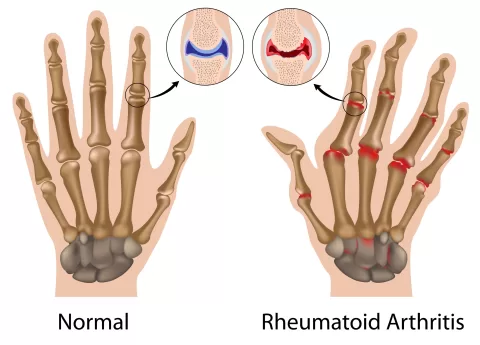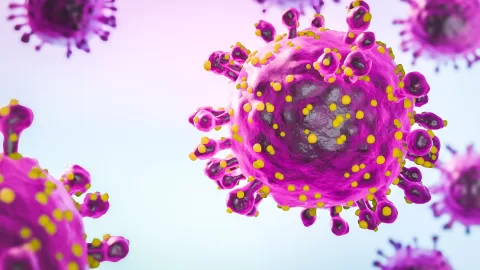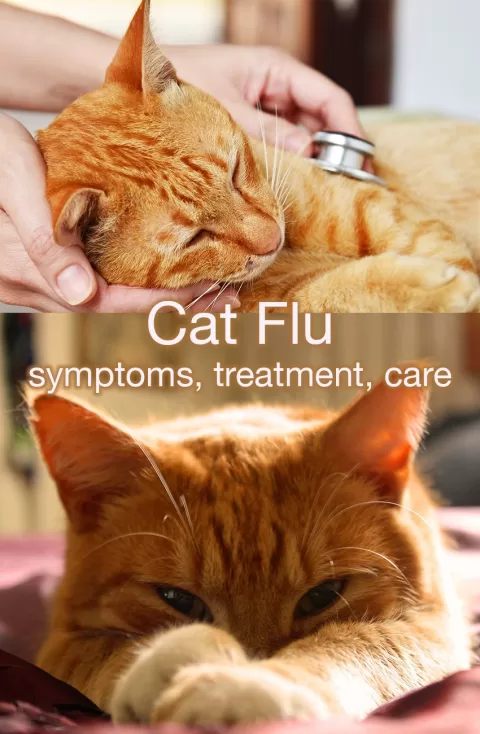Zoonotic diseases, or animal-borne diseases, pose significant threats to public health, particularly in areas where urbanization intersects with wildlife habitats, known as the wildland-urban interface. As cities continue to expand, an increasing number of humans are living in close proximity to animals, creating fertile ground for disease transmission and the emergence of new pathogens. A recent study from Yale highlights this pressing issue, revealing that over 3.5 billion people reside in these vulnerable regions, and many are at heightened risk of zoonotic infections. The growing trend of urbanization and health challenges has made it imperative to understand how these animal-related diseases can affect urban populations and potentially lead to future pandemic threats. As interactions between wildlife and humans become more common, the need for effective surveillance and preventive measures against zoonotic diseases intensifies.
Diseases that transfer from animals to humans, often referred to as animal-borne diseases, represent a serious and often underestimated public health challenge. The areas where urban environments meet natural landscapes, known as the wildland-urban interface, are crucial in understanding the dynamics of disease emergence. As human settlements expand into these regions, the risk of disease transmission grows, heightening concerns about urbanization and health disparities. With an increasing overlap between urban areas and wildlife habitats, populations living in these zones face ongoing threats from pathogens that may spill over from animals. Recognizing the implications of this phenomenon is vital for preventing potential outbreaks and managing health risks associated with these emerging zoonotic illnesses.
Understanding Zoonotic Diseases in Wildland-Urban Interface
Zoonotic diseases, also referred to as animal-borne diseases, are illnesses that can be transferred from animals to humans. The wildland-urban interface (WUI) presents a unique risk factor for the emergence of these diseases due to the increasing interactions between urban populations and wildlife. As more people inhabit the WUI, the potential for spillover—the transfer of pathogens from animals to humans—grows significantly. This spillover can occur in various ways, from hunting practices that introduce wildlife pathogens into urban markets to livestock interacting with wild animal hosts.
A Yale study emphasizes the rising threat of zoonotic diseases in these regions, indicating that urbanization and increased human encroachment into natural habitats create ideal conditions for disease transmission. With over 3.5 billion people residing in the WUI, it becomes crucial to monitor and manage these health risks effectively. As we witness rapid urban population growth, the physical footprint of cities expands, simultaneously heightening the associated exposure to zoonotic diseases that can have far-reaching public health implications.
Environmental Factors Contributing to Disease Transmission
The interaction between human populations and wildlife in WUI regions is characterized by complex land-use patterns that foster close coexistence. In many of these areas, urban residents live near livestock and wild animals, creating multiple pathways for potential disease transmission. For instance, as agricultural activities shift into these ecotones, humans may come into direct contact with pathogens through livestock, wildlife encounters, or contaminated insect vectors. This environment not only increases the likelihood of zoonotic spillover events but also breeds conditions for new diseases to emerge.
Additionally, climate change exacerbates these challenges by altering animal migration patterns and influencing the distribution of disease vectors like mosquitoes and ticks. Warmer temperatures can extend the breeding seasons of these insects, leading to increased interaction with urban populations. The exploration of how urbanization and climate interconnect is crucial in understanding the potential for disease transmission within the WUI, highlighting the urgent need for public health interventions that account for these ecological dynamics.
Urbanization and Health Risks in Zoonotic Disease Spread
Urbanization significantly impacts public health, especially concerning the transmission of zoonotic diseases. As cities expand into previously untouched wild lands, the complexity of these landscapes increases, creating opportunities for closer human-animal interaction. Research shows that populations living in high-density slums and impoverished conditions are particularly vulnerable, as their living situations often involve inadequate sanitation and limited access to medical care, allowing diseases to spread rapidly.
Moreover, as urbanization continues to encroach on natural habitats, the risk of spillovers from wildlife becomes a pressing public health issue. Historical data shows links between urban encroachment and outbreaks of zoonotic diseases, indicating that as we continue to expand our cities without regard for wildlife habitats, we may inadvertently set the stage for future pandemics. The integration of urban planning and public health initiatives is therefore essential to mitigate these risks and ensure safer living conditions for all.
The Role of Research and Policy in Mitigating Pandemic Threats
Ongoing research into zoonotic diseases is vital to understanding and mitigating the risks associated with urbanization. Experts like Dr. Yu-Min Chuang emphasize the need for investment in studies that focus on the interactions between humans, wildlife, and disease vectors. By comprehensively understanding these dynamics, policymakers can implement effective strategies that monitor and control potential outbreaks before they escalate into pandemics.
Furthermore, interdisciplinary collaboration among scientists, healthcare professionals, and urban planners is crucial. As highlighted by various studies, addressing the challenges posed by zoonotic diseases in WUI areas requires a multifaceted approach that considers ecological, economic, and social factors. Investing in public health infrastructure and education on zoonotic disease transmission can empower communities to take preventive measures, ultimately reducing the incidence of these animal-borne diseases.
Impacts of Urban Sprawl on Infectious Disease Dynamics
Urban sprawl not only transforms landscapes but also reshapes the dynamics of infectious diseases, particularly zoonotic ones. As urban areas expand, they encroach on natural habitats, increasing the interface between humans and wildlife. This phenomenon creates conditions conducive to disease transmission, as individuals in these regions may frequently interact with animals that carry pathogens. The rapid urbanization of the WUI amplifies these risks, posing challenges not only for public health but also for biodiversity.
Moreover, urban sprawl can hinder effective disease control strategies. Fragmented habitats may disrupt natural predator-prey relationships and lead to increased populations of disease carriers, like rats and mosquitoes. The implications of these changes are significant, as they can lead to higher incidences of diseases such as West Nile virus or hantavirus among urban dwellers. As cities continue to grow, public health officials must consider these factors when developing strategies to combat the spread of zoonotic diseases.
COVID-19 and the Importance of Preparedness Against Zoonotic Outbreaks
The emergence of COVID-19 has highlighted the critical need for preparedness against zoonotic outbreaks. The interconnectedness of global travel and trade has accelerated the spread of diseases originating in wildlife—underscoring the inevitability of future pandemics if adequate measures are not taken. Experts have reiterated that increased urbanization and climate change will likely result in more zoonotic diseases emerging, making it essential to bolster our surveillance and response systems within urban environments.
Investments in research and healthcare systems focused on zoonotic diseases are crucial in effectively managing potential threats. The experiences gained during the COVID-19 pandemic have prompted calls for a more integrated approach to public health that encompasses surveillance of animal populations and habitats. This proactive stance aims to identify and mitigate risks before they translate into widespread health crises, reinforcing the necessity of a coordinated effort among scientists, health officials, and governments.
Coping Mechanisms for Communities in Zoonotic Risk Areas
Communities residing in the wildland-urban interface must develop effective coping mechanisms to address the risks posed by zoonotic diseases. Public awareness campaigns can play a vital role in educating residents on the importance of hygiene practices and the potential risks associated with animal interactions. By promoting responsible practices and informed decision-making, communities can collectively reduce their vulnerability to infectious diseases.
Additionally, implementing local policies that prioritize the health of both humans and wildlife is essential. This could include creating buffer zones, improving sanitation in urban-livestock interactions, and providing resources for regular health screenings in at-risk populations. Strengthening community resilience against zoonotic diseases will require continuous efforts that align health, environmental, and urban planning initiatives to foster safer living conditions in the WUI.
The Future of Zoonotic Disease Research in Urban Environments
The field of zoonotic disease research is evolving rapidly, particularly with the challenges posed by urbanization. As cities continue to expand into natural habitats, researchers are tasked with understanding the complex interplay between urbanization, wildlife, and human health. Future studies will need to incorporate data on land-use changes and urban ecology to effectively assess the risk of zoonotic diseases and their potential impacts on public health.
Moreover, interdisciplinary approaches that combine expertise from various fields—including epidemiology, urban planning, and environmental science—will be essential for addressing the multifaceted nature of zoonotic diseases. By fostering collaboration among researchers, public health officials, and policymakers, we can work towards developing actionable solutions that mitigate the risks posed by urbanization and help safeguard the health of communities against future pandemics.
Implementing Solutions to Combat Zoonotic Disease Risks
To effectively combat the escalating risks of zoonotic diseases, coordinated efforts at multiple levels of governance and health sectors are necessary. Policymakers must prioritize comprehensive health frameworks that address both human and animal health, often referred to as One Health approaches. This integrated perspective encourages collaboration among veterinarians, health professionals, and environmental scientists to tackle the interconnected challenges presented by zoonotic diseases.
Moreover, community engagement plays a crucial role in the successful implementation of these solutions. Local initiatives that promote awareness of zoonotic diseases and their transmission pathways can empower residents to take proactive measures. From participating in vaccination campaigns to adopting better sanitation practices, communities can become active participants in lowering the risks associated with zoonotic diseases, ensuring that public health remains a shared priority as urban areas continue to evolve.
Frequently Asked Questions
What are zoonotic diseases and how are they linked to the wildland-urban interface?
Zoonotic diseases are illnesses that are transmitted from animals to humans, often through direct contact or vectors such as insects. The wildland-urban interface (WUI) is an area where urban environments meet natural landscapes, increasing the likelihood of human-animal interactions. This proximity facilitates disease transmission, as seen in studies highlighting the rise of zoonotic diseases in these regions.
How does urbanization contribute to the spread of zoonotic diseases?
Urbanization can lead to the expansion of the wildland-urban interface (WUI), creating conditions for increased interactions between humans and wildlife. These interactions amplify the risk of spillover events, where diseases jump from animals to humans. As urban populations grow, so do the chances of encountering pathogens associated with wildlife and livestock.
What are the pandemic threats posed by zoonotic diseases in urban settings?
Zoonotic diseases present significant pandemic threats, especially in urban settings where high population density and close proximity to wildlife create ideal spillover conditions. Diseases like COVID-19 and Ebola have illustrated how zoonotic infections can lead to widespread outbreaks, underlining the need for vigilance in urban areas intertwined with natural habitats.
What role do insect vectors play in the transmission of zoonotic diseases at the wildland-urban interface?
Insect vectors, such as mosquitoes and ticks, are crucial in the transmission of zoonotic diseases, especially in the wildland-urban interface. These insects can carry pathogens from wildlife to urban human populations, facilitating diseases such as malaria and Lyme disease, thereby intensifying the health risks associated with urbanization and wildlife proximity.
Why are populations living in the wildland-urban interface at higher risk for zoonotic diseases?
Populations in the wildland-urban interface are at a heightened risk for zoonotic diseases due to increased contact with wildlife and livestock, creating multiple pathways for disease transmission. Those living in poverty or informal settlements are particularly vulnerable as they may lack proper healthcare and sanitation, exacerbating the impact of zoonotic diseases.
What are some examples of zoonotic diseases that have emerged due to urbanization and contact with wildlife?
Several zoonotic diseases have emerged from urbanization, including avian influenza, Ebola, and yellow fever. These diseases often arise from spillover events involving wildlife, livestock, or insect vectors in urban environments where human and animal populations overlap.
How can we mitigate the risks of zoonotic diseases associated with urbanization?
Mitigating the risks of zoonotic diseases linked to urbanization involves ongoing investment in public health, surveillance of wildlife and livestock interactions, and education on safe practices. Additionally, sustainable urban planning that considers wildlife habitats can help reduce human-wildlife contact, thereby lowering the potential for disease transmission.
| Key Point | Details |
|---|---|
| Rise in Zoonotic Diseases | Increasing animal-human interactions in wildland-urban interfaces (WUI) are leading to higher zoonotic disease transmission. |
| Urbanization and WUI Expansion | Over 3.5 billion people live in WUI, which is expanding due to urbanization. |
| Risk Factors | Urban populations coexist with livestock and wild animals, increasing spillover risks. |
| Pathways of Transmission | Spillover can happen through hunting bushmeat, livestock interaction with wildlife, and insect vectors carrying pathogens. |
| Pandemic Threat | Zoonotic diseases pose a risk for widespread outbreaks, especially in impoverished areas. |
| Climate Impact | Climate change and increased global travel are expected to lead to more zoonotic disease emergence. |
Summary
Zoonotic diseases, which are diseases transmitted from animals to humans, are becoming a significant concern as they are increasingly spread within the wildland-urban interface. The rise in urbanization and the resultant mingling of human populations with wildlife creates optimal conditions for these diseases to transfer. As such, it is imperative to recognize the role of environmental factors and human behavior in the emergence of zoonotic diseases and act proactively to mitigate their impact.
The content provided on this blog (e.g., symptom descriptions, health tips, or general advice) is for informational purposes only and is not a substitute for professional medical advice, diagnosis, or treatment. Always seek the guidance of your physician or other qualified healthcare provider with any questions you may have regarding a medical condition. Never disregard professional medical advice or delay seeking it because of something you have read on this website. If you believe you may have a medical emergency, call your doctor or emergency services immediately. Reliance on any information provided by this blog is solely at your own risk.








